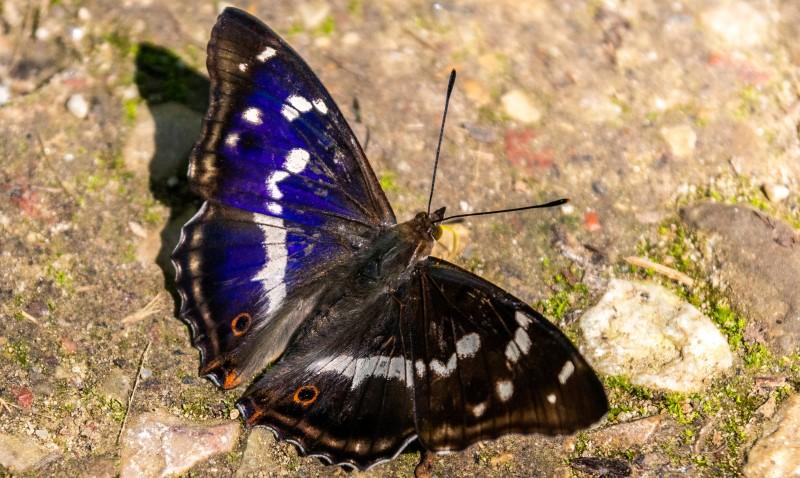
Purple Emperor in the Forest
This summer, the rare and elusive purple emperor was found in not one but three locations within the Heart of England Forest. Mike Slater from Butterfly Conservation and Matthew Oates, the country’s leading expert on the purple emperor, believe the Spernal area of the Forest has huge potential for this rare butterfly.
A rare sight
The purple emperor, one of the UK’s largest butterflies, dwells high in the tree tops and it is the males who boast the deep purple iridescence.
The adult butterfly emerges in early July, with the best chance of seeing them in the second and third weeks of July, but they rarely come down to the forest floor making them notoriously difficult to spot.
Purple emperor sighted in the Forest
The purple emperor was first noted in 2015 at Spernal Park, an old oak woodland on a steep west-facing slope that leads up to an excellent breeding ground on the summit dominated by caprea-type sallows. Sallow thickets, also known as goat willow or pussy willow, are essential for purple emperor to thrive as the caterpillars feed on it.
In 2017 it turned up in another ancient woodland hilltop relic, Bannam’s Wood Site of Special Scientific Interest (SSSI). Bannam’s Wood is an ancient ash-wych elm wood with an acre or two of tall oaks on the summit, where as many as three males have been seen in a vista, in a classic hill top territory.
This year, for the first time, a single female purple emperor butterfly was sighted in Coughton Park Local Wildlife Site (LWS), taking our tally to three different locations in the Forest for this impressive butterfly.
There are also other places in the Forest where purple emperor may already have colonised but have yet to be recorded. The hilltop at Windmill Hill is one such place but it is densely wooded so spotting purple emperor here will only be possible along the edges, which they’ll use on windy days (leeward) and in late morning when rising up to the hilltop.
These hilltop woods are ideal for males to go hill-topping, a mating behaviour seen in butterflies and other insects. The males fly up to and stay on a hilltop, competing for the best territory to mate with females who fly up to meet their mate.
A home for the purple emperor
We are delighted that the Forest is home to one of the UK’s rarest butterflies. As the Forest grows so we are able to provide a more connected landscape for not only insects such as the purple emperor, but for a wide range of wildlife.
Wildlife surveys in the Forest
Every year we undertake wildlife surveys in the Forest, including butterfly surveys, so we can monitor how well they are doing. If you would like to find out more about becoming a volunteer and helping with our wildlife surveys, please visit our volunteering page and sign up for our volunteer news.



